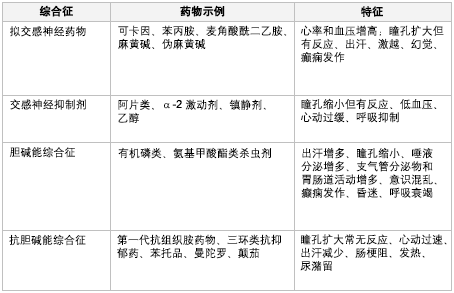定义
昏迷为意识的丧失。
阅读更多无法唤醒的无意识状态包括:眼睛接受刺激后无法睁开、运动反应几乎为简单的退缩型运动、语言反应几乎为简单的非词语发声。该定义的前提是使清醒患者做出反应的运动通路和系统是完整的。[1]Posner JB, Saper CB, Schiff ND, et al. Psychogenic unresponsiveness. Plum and Posner's diagnosis of stupor and coma. New York, NY: Oxford University Press; 2007.[2]Wijdicks EFM. The comatose patient. New York, NY: Oxford University Press; 2007.[3]Young GB, Wijdicks EFM, eds. Disorders of consciousness. Volume 90. The Handbook of Clinical Neurology, 3rd series. New York, NY: Elsevier; 2008.
完全意识是一种清醒状态,一个人可以意识到自己和周围的环境,包括能够在无任何运动缺陷的情况下,感知和理解各种刺激,能够与其他人互动和交流沟通。
基本警觉和觉醒是上行网状激活系统(ascending reticular activating system, ARAS)的功能。
意识更为复杂且尚未完全被理解。意识有多个层级(最高可能是自我意识和感知)和组成部分(例如:知觉、记忆、注意力、语言和其他符号编码、情感、动机、反应选择)。现在认为,这些意识组成部分和全意识本身均与大脑皮质区域网络的整体化作用有关。[4]Sporns O. Structure and function of complex brain networks. Dialogues Clin Neurosci. 2013;15:247-262.http://www.ncbi.nlm.nih.gov/pmc/articles/PMC3811098/http://www.ncbi.nlm.nih.gov/pubmed/24174898?tool=bestpractice.com在清醒意识的评估中,修订版昏迷恢复量表 (Coma Recovery Scale-Revised, CRS-R) 有助于对意识水平进行评级和追踪。[5]Bodien YG, Carlowicz CA, Chatelle C, et al. Sensitivity and specificity of the coma recovery scale--revised total score in detection of conscious awareness. Arch Phys Med Rehabil. 2016;97:490-492.http://www.ncbi.nlm.nih.gov/pubmed/26342571?tool=bestpractice.com
脑死亡
所有脑干功能受到不可逆转的完全破坏,包括警觉能力、颅神经功能和呼吸暂停(英国的定义)或所有脑功能(美国称为全脑死亡)。
对于婴幼儿及儿童死亡的神经系统测定,已有修订版的指南。[6]Nakagawa TA, Ashwal S, Mathur M, et al. Guidelines for the determination of brain death in infants and children: an update of the 1987 task force recommendations-executive summary. Ann Neurol. 2012;71:573-585.http://www.ncbi.nlm.nih.gov/pubmed/22522447?tool=bestpractice.com
如果没有病因,绝不可诊断为脑死亡。
植物状态(Vegetative state, VS)
微意识状态
谵妄
偏侧空间失调症
脑病
占位性病变
包括脑脓肿、肿瘤、脑出血、有硬膜外或硬膜下血肿的外伤。
根据病例组合,占位性病变通常会导致昏迷,这种现象尤其常见于有外伤、癌症或卒中患者的医疗中心,甚至在综合医院也会出现这种现象。
有一点十分重要,就是要识别脑疝综合征的早期阶段,在发生不可逆转的损害前实施检查和治疗。
脑疝综合征是由大脑结构从一个分腔转移至另一个分腔造成的。意识障碍是由于上行网状激活系统组成部分受到压迫造成的。
在大脑镰下疝中,幕上区域中线结构横向移位,压迫丘脑,导致进行性的意识障碍,后期或可出现偏瘫以及动眼神经麻痹。
若出现小脑幕切迹疝,钩回(钩回疝)或间脑结构(丘脑和下丘脑)会经小脑幕开口向下移位。这将导致脑干受压和早期动眼神经麻痹,往往出现于意识丧失之前。
扁桃体疝通过枕骨大孔压迫尾髓呼吸中枢,引起呼吸骤停和脑死亡。
据称脑中心疝(间脑脑疝)也较为常见。在后期,由于中脑受压导致不可逆的双侧动眼神经麻痹。
脑干功能从前到后的恶化与影响组织的微血管灌注的脑干变形同时发生。意识丧失以伴随着颅神经麻痹突发为典型特征。
类似昏迷的疾病
短暂性昏迷
晕厥(昏厥)是一种短暂性昏迷,由暂时性降低的全脑灌注造成,病因可包括:心脏病因、血管舒缩病因、直立性低血压或肺栓塞。
癫痫发作时脑中可出现癫痫样放电,从而导致短暂性昏迷,可表现为失神发作/癫痫小发作(双额或弥漫性皮质和丘脑受累)、复杂部分性癫痫发作(通常起源于颞叶,伴有弥漫性边缘系统受累和大脑皮层抑制)或全身惊厥性癫痫发作(伴有累及大脑两半球和脑干结构的癫痫放电)。在癫痫持续状态中,昏迷时间会被延长(例如脑电图诊断的非惊厥性癫痫持续状态)。可能出现惊厥动作和尿失禁,尤其在全身强直阵挛性发作中更是如此。
脑震荡为头部受到打击后的短暂性意识丧失。
病理生理学
警觉或唤醒是上行网状激活系统的功能。唤醒至觉醒是意识的前提。从解剖学上讲,唤醒系统包括脑干上部大脑脚盖、间脑和大脑皮质投射区中的若干结构。[7]Vincent SR. The ascending reticular activating system - from aminergic neurons to nitric oxide. J Chem Neuroanat. 2000;18:23-30.http://www.ncbi.nlm.nih.gov/pubmed/10708916?tool=bestpractice.com其中,最主要的结构为脑干前部的乙酰胆碱能神经元。这些神经元沿两条主要通路向头侧投射,这两条通路也与皮层唤醒有关:[7]Vincent SR. The ascending reticular activating system - from aminergic neurons to nitric oxide. J Chem Neuroanat. 2000;18:23-30.http://www.ncbi.nlm.nih.gov/pubmed/10708916?tool=bestpractice.com
上行网状激活系统是一个很复杂的系统,有一些冗余的通路参与觉醒的唤起和维持。这可能导致大多数患者的唤醒系统在初次昏迷发作后3周内都能恢复。作为推论,疾病会损害上行网状激活系统重要组件的功能,从而造成意识障碍。
流行病学
在英国,虽然一过性意识丧失较为常见(例如晕厥、癫痫发作),约占急诊就医的 5%,但是因昏迷的院内会诊仅占所有入院数量的 0.02%。[8]Department of Health. Hospital Episode Statistics (England). 2002-2003. http://www.hesonline.nhs.uk/ (last accessed 3 August 2015).http://www.hscic.gov.uk/hes成年男女的患病率几乎相同。尽管平均年龄为 57 岁,但>75 岁的昏迷患者超过 35%。[8]Department of Health. Hospital Episode Statistics (England). 2002-2003. http://www.hesonline.nhs.uk/ (last accessed 3 August 2015).http://www.hscic.gov.uk/hes
预防和治疗
初步治疗措施包括气道、呼吸和循环(airway, breathing, and circulatory, ABC)支持。对于无反应的患者,气道保护至关重要。[9]Matthes G, Bernhard M, Kanz KG, et al. Emergency anesthesia, airway management and ventilation in major trauma. Background and key messages of the interdisciplinary S3 guidelines for major trauma patients [in German]. Unfallchirurg. 2012;115:251-264.
意识障碍患者的临床评估工具包括格拉斯哥昏迷评分和全面无反应性量表 (Full Outline of UnResponsiveness, FOUR) 评分系统;后者对于插管患者有一定优势。[10]Bruno MA, Ledoux D, Lambermont B, et al. Comparison of the Full Outline of UnResponsiveness and Glasgow Liege Scale/Glasgow Coma Scale in an intensive care unit population. Neurocrit Care. 2011;15:447-453.http://www.ncbi.nlm.nih.gov/pubmed/21526394?tool=bestpractice.com
指南和分析公布了以下疾病的预防和治疗:缺血性脑卒中、[11]Goldstein LB, Adams R, Alberts MJ, et al; American Heart Association; American Stroke Association Stroke Council. Primary prevention of ischemic stroke: a guideline from the American Heart Association/American Stroke Association Stroke Council: cosponsored by the Atherosclerotic Peripheral Vascular Disease Interdisciplinary Working Group; Cardiovascular Nursing Council; Clinical Cardiology Council; Nutrition, Physical Activity, and Metabolism Council; and the Quality of Care and Outcomes Research Interdisciplinary Working Group. Circulation. 2006;113:e873-e923.http://circ.ahajournals.org/cgi/content/full/113/24/e873http://www.ncbi.nlm.nih.gov/pubmed/16785347?tool=bestpractice.com[12]Lansberg MG, Bluhmki E, Thijs VN. Efficacy and safety of tissue plasminogen activator 3 to 4.5 hours after acute ischemic stroke: a metaanalysis. Stroke. 2009;40:2438-2441.http://www.ncbi.nlm.nih.gov/pubmed/19478213?tool=bestpractice.com蛛网膜下腔出血、[13]Bederson JB, Connolly ES Jr, Batjer HH, et al. Guidelines for the management of aneurysmal subarachnoid hemorrhage. Stroke. 2009;40:994-1025.http://www.ncbi.nlm.nih.gov/pubmed/19164800?tool=bestpractice.com脑出血[14]Steiner T, Juttler E. American guidelines for the management of spontaneous intracerebral hemorrhage in adults: European perspective. Pol Arch Med Wewn. 2008;118:181-182 [in Polish and English].http://pamw.pl/sites/default/files/pamw_04_steiner_red_en.pdfhttp://www.ncbi.nlm.nih.gov/pubmed/18575416?tool=bestpractice.com和外伤。[15]Pandor A, Harnan S, Goodacre S, et al. Diagnostic accuracy of clinical characteristics for identifying CT abnormality after minor brain injury: a systematic review and meta-analysis. J Neurotrauma. 2012;29:707-718.http://www.ncbi.nlm.nih.gov/pubmed/21806474?tool=bestpractice.com[16]Kim YJ. A systematic review of factors contributing to outcomes in patients with traumatic brain injury. J Clin Nurs. 2011;20:1518-1532.http://www.ncbi.nlm.nih.gov/pubmed/21453293?tool=bestpractice.com对于植物状态和微意识状态的患者,药物和电刺激的使用仍存有争议。[17]Oliveira L, Fregni F. Pharmacological and electrical stimulation in chronic disorders of consciousness: new insights and future directions. Brain Inj. 2011;25:315-327.http://www.ncbi.nlm.nih.gov/pubmed/21314279?tool=bestpractice.com


